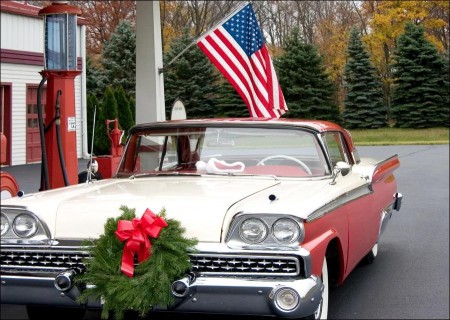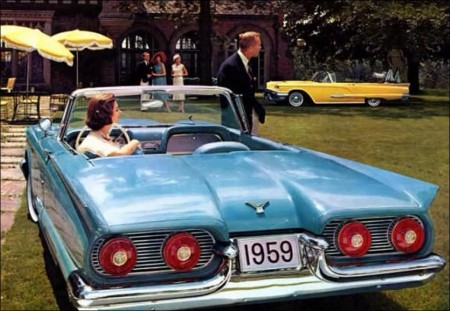With the return of prosperity in the early 1920’s, the American automobile industry came into its own as the nation’s largest manufacturing enterprise. Production of motor vehicles climbed from 2,227,349 in 1920 to a phenomenal high of 5,337,687 in 1929, a figure not surpassed for another 20 years. By 1929, there was one automobile on the highway for every six people in the United States, and Herbert Hoover’s campaign slogan of “two cars in every garage” was by no means as ridiculous as it was made out to be by subsequent critics.
Much of the economic expansion of the period, in fact, was a direct consequence of the rise of the motor vehicle. The production and the operation of automobiles absorbed 20% of the country’s annual steel output, 90% of its gasoline, 80% of its rubber, and 75% of its plate glass. Moreover, as millions of Americans became automobile owners, they demanded better roads.
The Federal Highways Act of 1921 and the dedication of the Zero milestone in Washington a year later, a ceremony at which Roy D. Chapin was appropriately one of the principal speakers, signaled the launching of a vast program of road building by both Federal and state authorities. The automobile also brought with it a substantial new area of service occupations: dealers and repair shops, filling stations and tourist camps.
The effect of the automobile on recreational habits was often decried in the 1930’s: the substitution of a passive amusement for something more active; standardization and regimentation; the moral problem of the parked sedan and roadside tourist camp. The Sunday-afternoon drive was devastatingly described — the crowded highways, traffic jams, and accidents; the car windows tightly closed against spring breezes; and whatever beauties the landscape might offer lying hidden behind forbidding lines of advertisements. “One arrives after a motor journey,” one eminent sociologist wrote, “all liver and no legs; one’s mind is asleep, one’s body tired; one is bored, irritable, and listless. But what such critics forgot was that the great majority of Sunday and holiday motorists, or even vacation tourists, would have been cooped up in crowded towns and cities except for the automobile.
The country they saw may at times have been almost blotted out by billboards and the air they breathed tainted by gasoline fumes. But the alternative in many cases would have been the movie, the dance-hall, or the beer-parlor. The steamboat and the railroad began a century ago to open up the world of travel and provide some means of holiday escape from one’s immediate enviromnent, but until the coming of the automobile, recreation along these lines was a rare thing. The wealthy could make the fashionable tour in 1825, the well-to-do built up the summer resorts of the 1890’s, but every Tom, Dick, and Harry toured the country in the 1930’s — thanks to the automobile.
By the early 1950s, brightly polished chrome on bumpers, door handles, headlight surrounds and body trim had become the main means through which automobiles expressed more than their mere utility functions. Their bulbous pressed steel bodies provided a canvas upon which all sorts of imaginative delights could be portrayed.
While it was a highly capital-intensive exereise to modify the shell itself, it was relatively cheap to vary the amount of chrome detailing in order to provide a range of differently priced models. The fact that General Motors soId automobiles under a range of different brand names – Cadillac, Pontiac, Buick, Chevrolet and OIdsmobile, each aimed at a different sector of the market – meant that it could simultaneously standardize the production of major components and provide different models through varied body decoration.
Related Link: Reod more Popular Culture stories
Visits: 124




